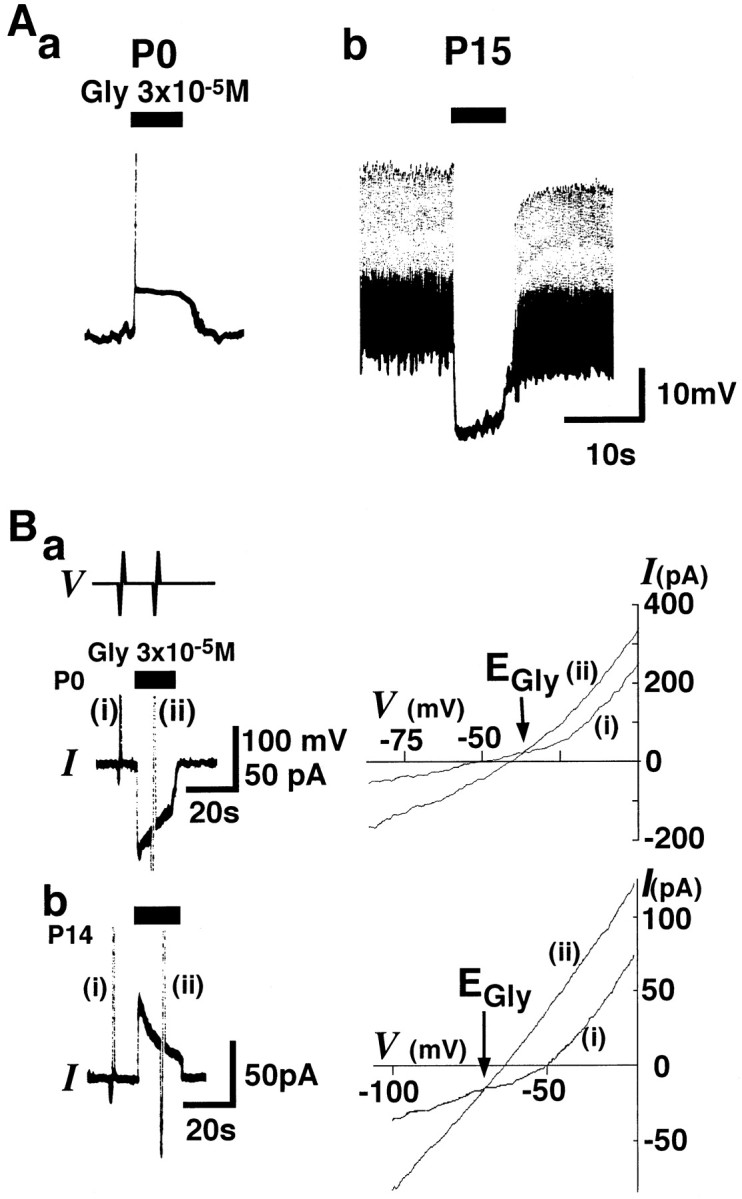Fig. 1.

Developmental changes in glycine responses in isolated LSO neurons. Aa, At P0, 3 × 10−5m glycine (Gly,closed bars) induced depolarization associated with an action potential (vertical line) in a current-clamp mode under gramicidin perforated patch recording configuration.Ab, At P15, glycine induced a hyperpolarization, leading to the blockage of spontaneous action potentials. Resting membrane potentials (Vrests) were −53 and −60 mV in a and b, respectively. In the present study, test solutions were applied by the Y-tube method.Ba, Left, In a voltage-clamp mode, glycine-induced current (IGly) at a holding potential (VH) of −50 mV was inward at P0 (bottom trace, I). Transient vertical lines (i and ii) indicate the current responses to steps in ramp voltage. The experimental protocol for ramp voltage steps from −100 to 0 mV with 2 sec duration was made before and during application of 3 × 10−5m glycine (top trace,V). Right, Current–voltage relationships obtained from ramp voltage steps (i andii). The reversal potential ofIGly(EGly) indicated by the intersection of i and ii was −35 mV at P0.Bb, Left, Glycine induced an outward current at a VH of −50 mV at P14.Right, EGly was −70 mV.EGlys were obtained using the protocol described above.
